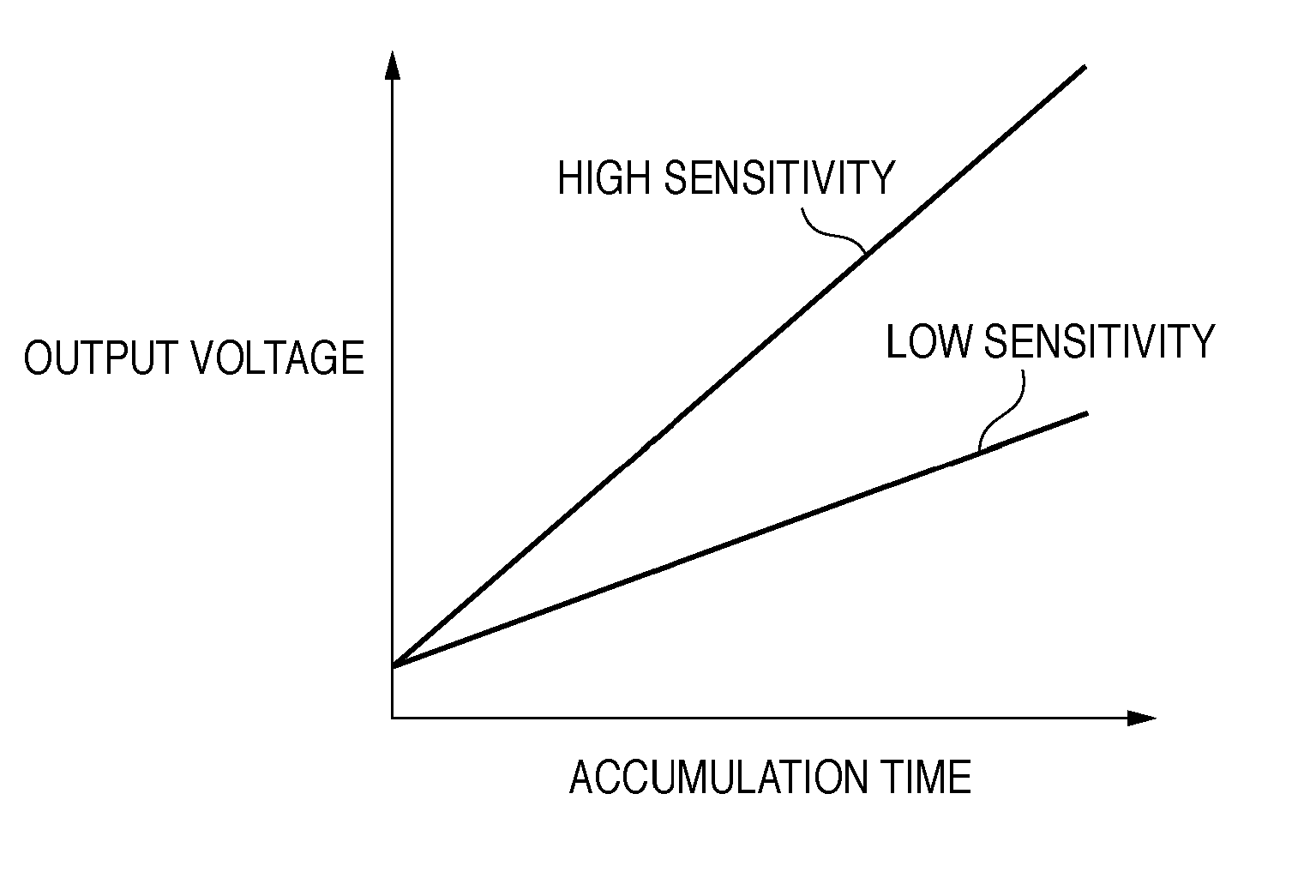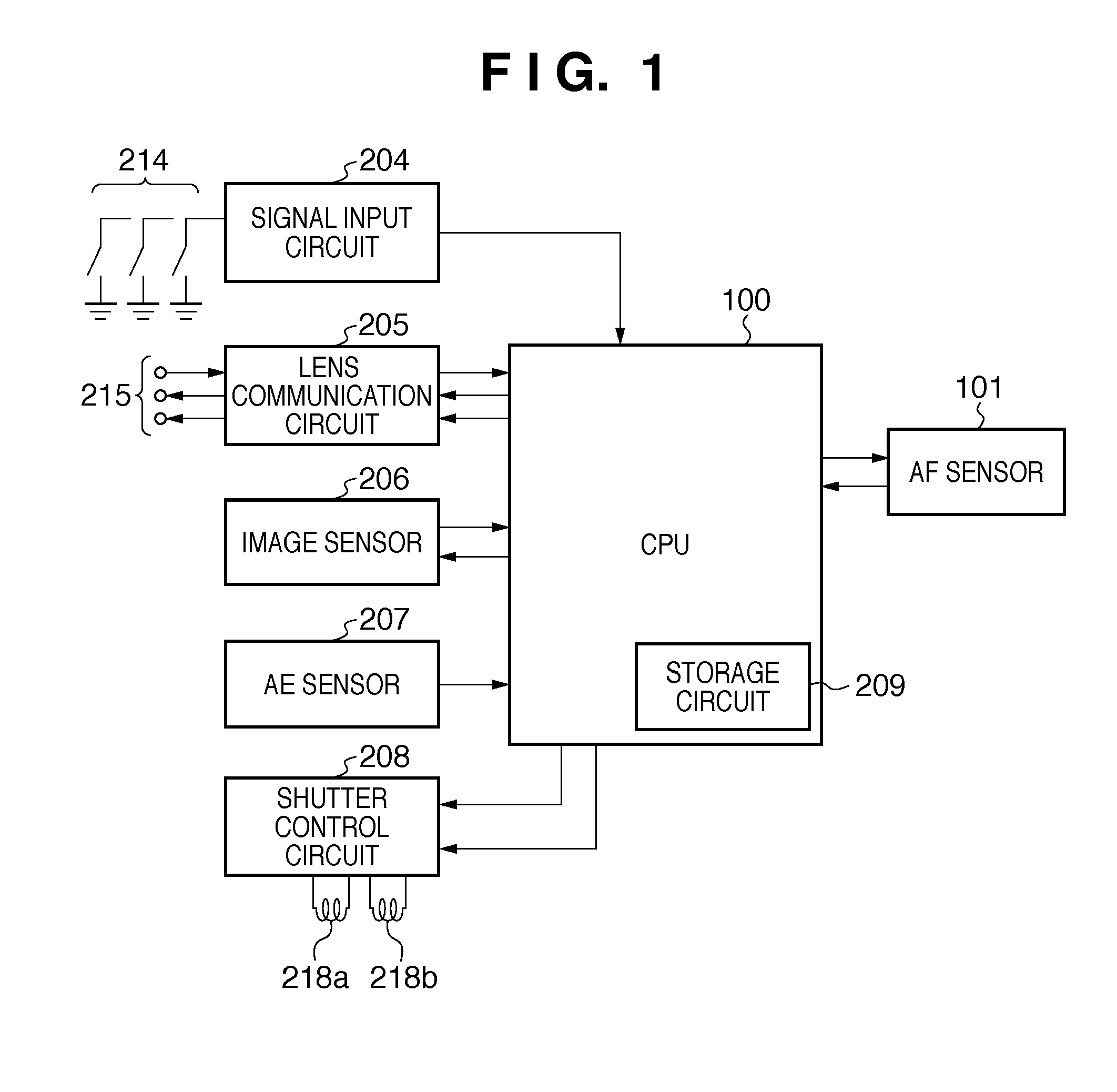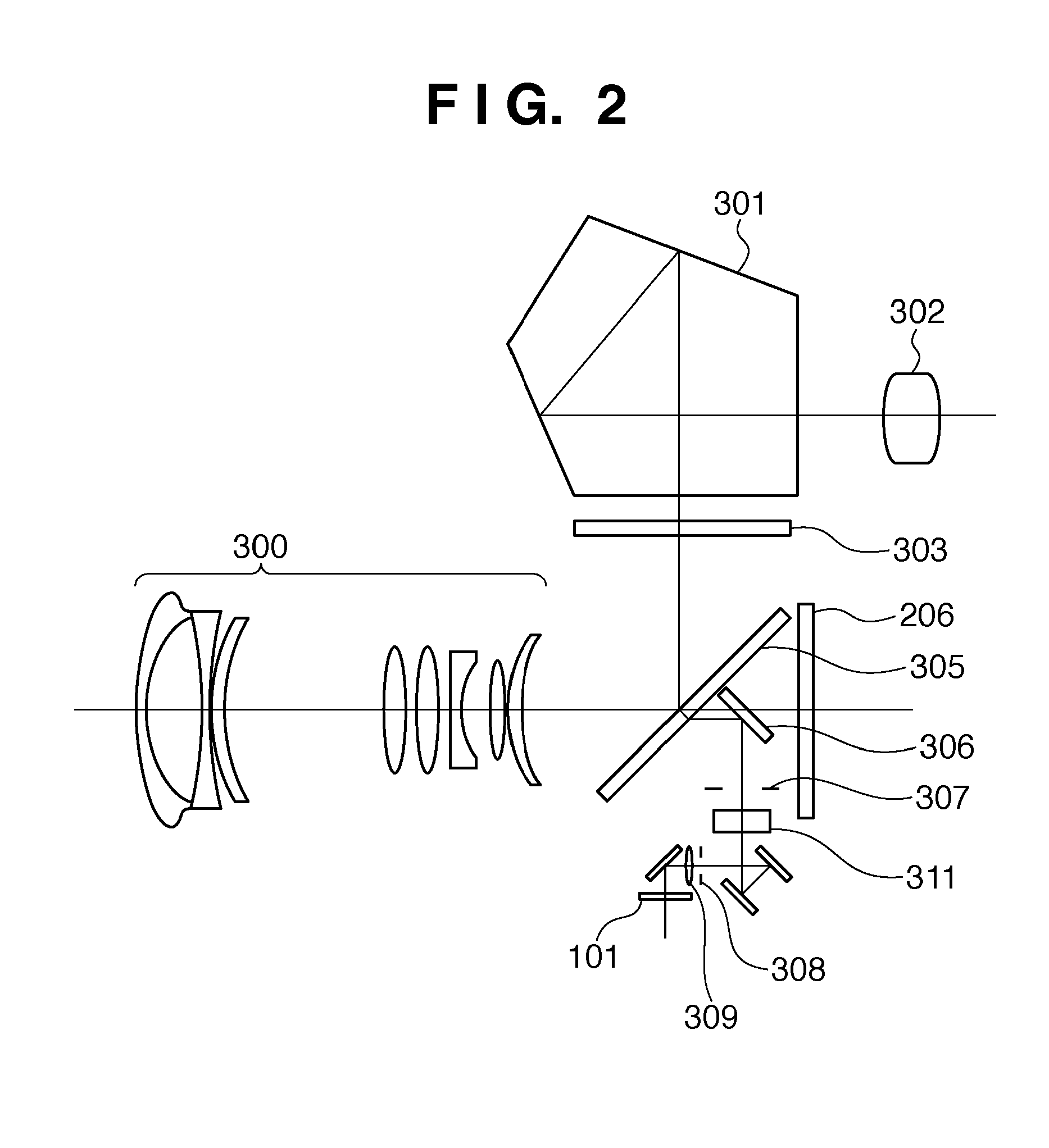Focus detection apparatus
a technology of focus detection and apparatus, which is applied in the direction of exposure control, printers, camera focus arrangement, etc., can solve the problems of inability to improve, inability to obtain satisfactory s/n ratio, and inability to achieve dark current or in the circuit nonnegotiably large, etc., to achieve satisfactory s/n ratio and wide brightness range.
- Summary
- Abstract
- Description
- Claims
- Application Information
AI Technical Summary
Benefits of technology
Problems solved by technology
Method used
Image
Examples
first embodiment
[0025]FIG. 1 is a block diagram showing the arrangement of a digital camera serving as an image capturing apparatus according to the first embodiment of the present invention. A signal input circuit 204 that detects a switch group 214 for various operations of the camera, an image sensor (image capturing element) 206, and an AE sensor 207 are connected to a microcomputer (to be referred to as a CPU hereinafter) 100 for the camera. A shutter control circuit 208 that controls shutter magnets 218a and 218b and an AF sensor 101 are also connected. The CPU 100 transmits a signal 215 to an imaging lens 300 (FIG. 2) via a lens communication circuit 205 so as to control the focus position or the stop. The operation of the camera is determined by the settings of the switch group 214.
[0026]The AF sensor 101 includes line sensors. The CPU 100 controls the AF sensor 101 to detect the defocus amount based on an object contrast distribution obtained by the line sensors and control the focus posit...
second embodiment
[0064]The operation of a focus detection apparatus according to the second embodiment of the present invention will be described below with reference to FIG. 12. FIG. 12 is a flowchart of second and subsequent focus detection operations when performing the focus detection operation continually a plurality of number of times in, for example, a continuously shooting mode. The first focus detection operation is the same as that of the first embodiment shown in FIG. 8.
[0065]In the first focus detection operation, focus point 1 is selected, a line sensor 102-1 is set at high sensitivity, and a line sensor 102-2 is set at low sensitivity.
[0066]The second focus detection operation will be described next. In step S800, it is determined whether focus detection calculation using the signal of the line sensor set at low sensitivity has been performed in the preceding focus detection operation. If focus detection calculation using only the signal of the line sensor 102-2 set at low sensitivity ...
PUM
 Login to View More
Login to View More Abstract
Description
Claims
Application Information
 Login to View More
Login to View More - R&D
- Intellectual Property
- Life Sciences
- Materials
- Tech Scout
- Unparalleled Data Quality
- Higher Quality Content
- 60% Fewer Hallucinations
Browse by: Latest US Patents, China's latest patents, Technical Efficacy Thesaurus, Application Domain, Technology Topic, Popular Technical Reports.
© 2025 PatSnap. All rights reserved.Legal|Privacy policy|Modern Slavery Act Transparency Statement|Sitemap|About US| Contact US: help@patsnap.com



